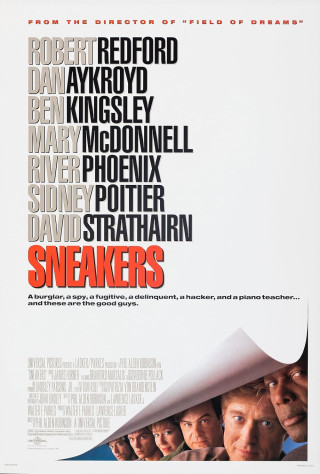Robert Redford died on Tuesday, at 89. You can head literally anywhere else to read full obituaries about one of Hollywood's best and most beautiful leading men — we're here to talk about two things: his environmental activism, and the 1992 movie Sneakers.
First, the activism: It is worth, I think, a basic accounting of an A-list celebrity's decades-long commitment to a cause. "The environmental movement has lost a giant," said Manish Bapna, the president and CEO of the Natural Resources Defense Council, on whose board of trustees Redford has long sat, in a statement on Tuesday. "Nobody has done more to shine a light on the most important environmental issues from the dawn of the environmental movement in the ‘70s through the biodiversity and climate crises of today."
Redford was talking, loudly, about renewable energy and the dangers of fossil fuels long before it was cool. He helped scuttle plans for a massive coal-fired power plant in southern Utah in the mid-1970s — an achievement for which he was burned in effigy by local residents who thought the plant could offer economic benefits that might outweigh them developing asthma and dying young. The site of that abadoned plant would later become part of Grand Staircase-Escalante National Monument.
He commissioned and executive produced an odd little short called The Solar Film in the late '70s (strangely, the dates are a bit hard to pin down — Redford himself has said 1975, Wikipedia says 1979, IMDB says 1980; it did get nominated for an Oscar in the awards that aired in 1980), which mocked human adoration of fossil fuels and touted solar power's potential:
"Solar energy could make a major contribution to our energy needs by 1985," the film concludes. "What are we waiting for." He has admitted since that he was "too early in my efforts to promote solar power," but he kept at it through multiple decades.
He held multiple climate change conferences at his Sundance Institute in Utah, including a remarkable "Greenhouse Glasnost Symposium" in 1989 in which he followed up a visit to the Soviet Union by, against the raging of his business manager ("You’re out of your fucking mind!"), inviting multiple Soviet scientists and others to a multilateral discussion of global warming. Coming a year after NASA scientist James Hansen's famous testimony to the Senate regarding the threat of climate change — Hansen was in attendance at the Glasnost conference as well, and Carl Sagan gave a keynote address — Redford said the resulting report was sent to George HW Bush and Mikhail Gorbachev and then promptly ignored by both.
